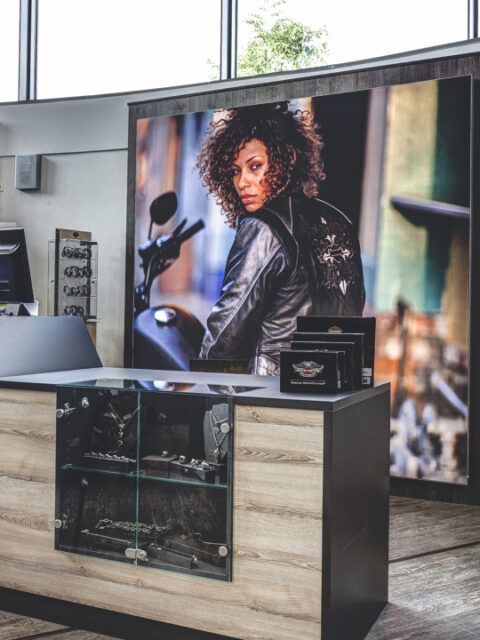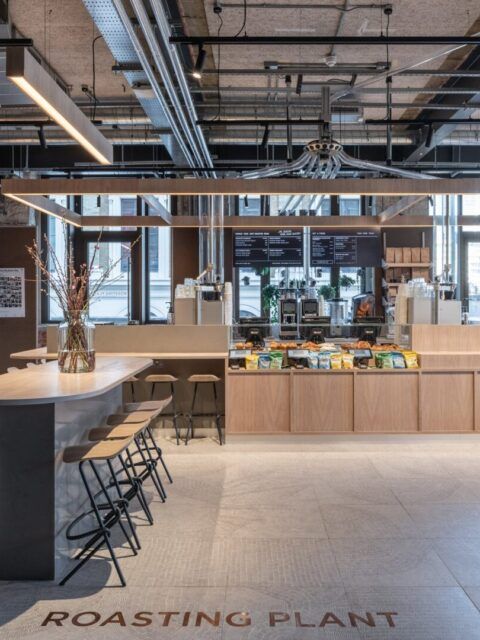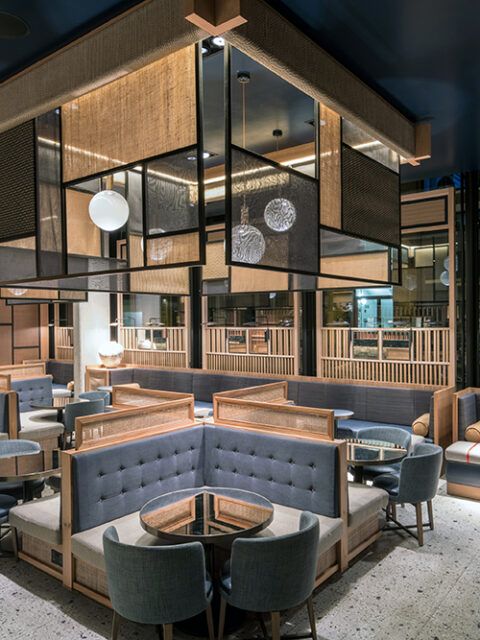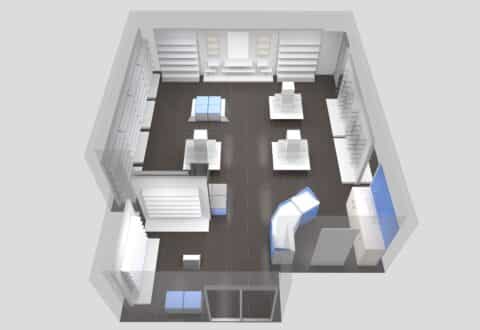
When working on a new store design, you want to do it really well. Designing a new store concept is like driving a car. Your goal is to get your customers from point A (the entrance) to point B (the checkout). But, there is also much more. Beacuse everything in between these points affects customer experience, brand image and ultimately – sales transactions. Read about these 5 key points to take into account when designing a store that sells. And then deliver a shopping experience your customers will love.
1. STORE CONCEPT
PLAN ABOVE ALL
Each brand, even if just starting, should have a clear business strategy for where their stores should be located and how they should look. These should be thought over carefully and then applied to each and every store to ensure business and brand consistency. Otherwise, mistakes here can be quite serious. These are two key elements of store planning right from the beginning:
Store location
A wrongly selected store location can seriously impact your income or even a store re-location or closing. That’s why the decision on a store location needs to take into account a whole set of criteria. These are: infrastructre criteria (eg. accessibility), present and potential customer traffic and other stores nearby (eg. shops with competitive or complemetary merchandise). Even though these have nothing to do with store fixtures, a bad store location decision can make even the best shop furniture pretty much useless.
Store layout and floor plan
You want your customers to navigate around your store comfortably and following their intuition. A store floor plan and its arrangement should make it natural for shoppers to follow the optimal path through the location. And, the customer path should be free of obstacles. And allow enough space. No tight passages in between the store gondolas and shelves, no random impulse purchase displays.
Otherwise, the store feels claustrophobic and quickly discourges visitors from shopping. So, the starting point is to provide comfortable space for customers to shop. And their comfort should be embedded in the store floor plan design and its execution.
2. COMMUNICATION AND SIGNAGE IN THE NEW STORE DESIGN
CLARITY AND PLEASURE OF SHOPPING
The communication style applied throughout the store should result from the brand communication strategy. Is your brand built on a friendly, Human 2 Human approach? Does it focus on demonstrating concrete benefits and strong brand accents? In that case, these elements must be also found in the communication inside your store. Otherwise, you will fail in building a strong connection to your brand in your customer’s mind.
Consitent brand communication needs to be reflected and supported by properly designed and placed in-store signage. Ensure the signs are logically placed, the print is on the right level and easy to read. It must be visually clear for shoppers where particular merchandise is displayed. And, all signs, posters and other signage elements have to create a consistant communication platform between your brand and customers.
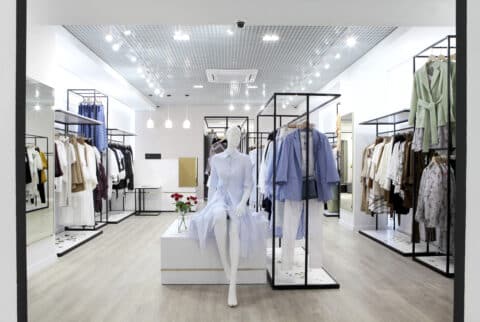
3. STORE FIXTURES AND FITTINGS
SHOPFITTING THAT (NOT ONLY) SELLS
Right store fixtures… what does it mean exactly? In fact, a whole lot, because modern furniture to a clothing or grocery store, pharamacy and beauty store should have a multi-purpose role. Why?
Store furniture are not just for merchandise display. They also organize the space making it a functional sales floor. Last, but not least, they also help to create the desirable store ambience and brand image. All these functions together work for you to sell efficiently and strengthen your brand image. That’s why you should carefully select the right store fixtures for your business.
Visual consistency and quality
Fixtures in all the stores should be in the same, brand-approved style and quality. Starting from the checkout counter through gondolas, shelving and display tables to fitting rooms. And, the store fixtures and equipment should be regularly re-visited. Any pieces with wear-and-tear should be replaced on a regular basis. Plus, it’s important to change your stores fixtures completely from time to time to catch up with new market trends and customer expectations. These continuous efforts can help to keep you in the retail game.
Hot Spot fixtures
These strategic pieces of store furniture feature your bestsellers and promotional or seasonal items. So, invest wisely in these display fixtures. Very often it’s just a matter of seconds for customers to notice your merchandise and step inside. Or go deeper inside your stores being tempted by an eye-catching display. Interested in finding out more? Click here
Checkout counter
Show us your store checkout counter and we will tell whether you use its maximum selling potential. Cash desks play a critical role in a store. Here is where the final transation takes place. And the final overall shopping experience that customers take home. Is your checkout counter properly designed and located? Curious to find out? Read more And recently, self-service chekouts are becoming more and more popular in the retail industry. Would these apply in your line of stores? Find out more
Kids’ corner
A children’s area can be a true competitive advantage and a confirmation of the pro-family image of your store. This kids friendly zone is a pro-selling element in a store setup. Parents have free hands and piece of mind when shopping while knowing their kids can engage in safe in-store fun. Check more
4. STORE LIGHTING
AND EVERYTHING BECOMES CLEAR!
Lighting in the store is a key topic in the art of merchandising. And an industry in itself. One thing is absolutely certain: lighting has a positive effect (or negative, if done wrong) on the buying behavior of customers.
Effective exposition of goods with the use of appropriately selected light creates the image of the interior and triggers specific emotions. Plus, good product lighting positions the product at the required level. And, light guides customers step by step, differentiating their shopping desires.
TYPES OF STORE LIGHTING
There are 3 basic types of store lighting:
- general lighting: serves as a background. Is responsible for the appropriate lighting intensity, especially in the communication and checkout areas. This category of lighting should provide adequate visual comfort to customers and staff
- accent lighting: acts like promotional and product lighting. Its task is to individualise products and emphasize their values
- decorative lighting: stimulates the customer’s interest. The examples of decorative lighting are the lighting of hot spots, special products or displays.
To sum up, store lighting supports branding, image creation and, above all, directly stimulates purchasing decisions. Poor or no lighting, in turn, in some zones may cause customers to resign. Or even trigger negative associations and aversion to the brand.
5. NEW STORE DESIGN: FITTING ROOMS
USE EVERY SQUARE INCH
It goes without saying that poorly designed fitting rooms can discourage shoppers from making their purchase. Fitting spaces that are too small, lack privacy or have no hooks for hanging customer’s belongings are just a few cardinal sins in the retail industry.
Do you want your customers to enjoy their fitting room experience? Then you really need to give fitting rooms some serious thought. And integrate the solution in the store layout right from the start. Otherwise you might fail right at the key decision-making moment for customers. Read more about the topic
The success of your store starts with the right store concept design. All the ingredients like floor plan, fixture combination and setup, including hot spots and strategic fixtures, need to create a consistant framework for your merchandise.
At CAPS we work combining the art of design with practical retail experience. Let us help you create a shopping environment your customer will enjoy and come back to.

